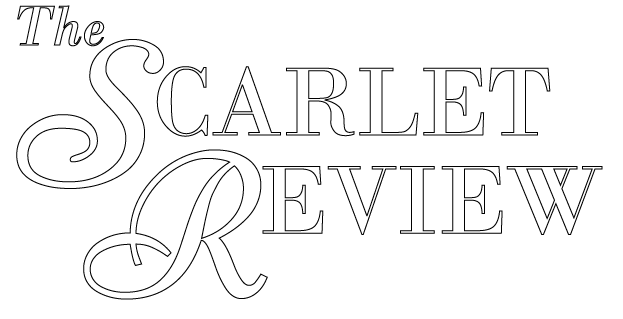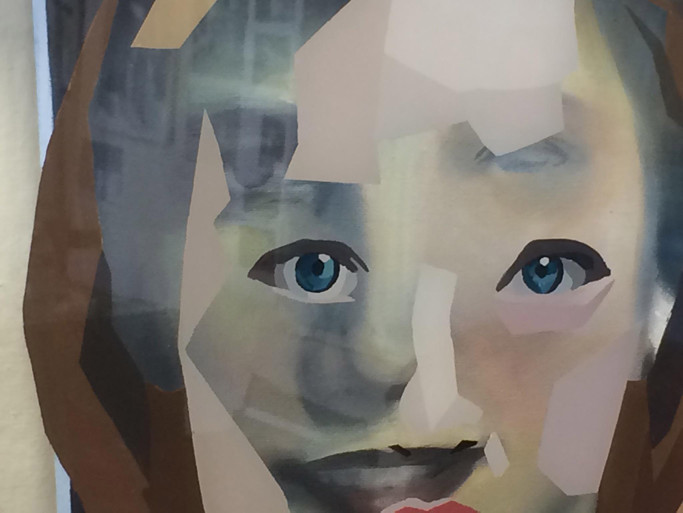






Every moment of human consciousness is wrapped up in choice. Euthanasia is also a choice and no matter how it is viewed, it is not a decision that can be arrived at without careful thought and consideration. As human beings, living life on the terms of complete and total autonomy is how most citizens of the U.S. are raised to think and led to believe. This line of thinking has a natural place within the decisions made regarding the most personal of matters, namely, the human being his or herself. Euthanasia as a choice pits current life quality against a future projected one and asks its participants how they value the present circumstances of the suffering. The most contested part of this debate revolves around euthanasia's purpose, which can end or extend a person's life in situations of terminal illness. As for the material here, it is background information presented so that the reader may have an understanding as to what euthanasia as a debate is.
There is an intuitive dynamic present that revolves around internal and external ownership of the human body. To explain this in more detail, the internal side of this thought process is concentrated on the ownership of the thought and therefore the desire for freedom of choice is not a surprising progression. The second part of this possession is the external ownership, or the belief that the bodies inhabited belong to the occupant. This is a thought that a large portion of society believes in. The idea of another person or group making decisions about topics that relate to the individual him or herself seems to violate human understanding of this thought. However, this complete and total authority over the human body does not exist in its purest form, at least not presently. There are both groups and individuals in society who are for and against this freedom of choice: the freedom to choose death or continue life. John Keown, a teacher on law and the ethics of medicine at the University of Cambridge, states that it is through this very choice that humans can flourish (Keown 53). To discuss the topic of euthanasia begs the understanding of exactly why this fundamental argument about choice exists in the first place and the relevance it has to both sides. It is imperative that the right or wrongness of it be thoroughly addressed; otherwise its societal impact cannot be understood and will consequently be caught up in endless debate.
Euthanasia as a practice is the termination of a human life with the intent of providing relief or mercy from a serious, health-related circumstance. Typically, this is based on some criteria such as terminal illness; serious injury with little to no signs of recovery, that may leave the patient in a state of coma with a slim or nonexistent chance of awakening. However, it is not limited to just those conditions. Another possible scenario could be a stipulation in a living will to forgo the prolonging of life by artificial means. This could require a decision by a family member or legal guardian, especially if this information was expressly detailed in a legal document. (As a side note, a do not resuscitate order is sometimes a part of the euthanasia discussion. This is a provision that mandates the healthcare provider should not perform CPR and attempt to bring back the life of the patient once the heartbeat stops or breathing ceases. This practice is frequently used in a utilitarian manner when revival will not alter the patient's circumstances. For the sake of clarity however, a do not resuscitate order will be excluded from this discussion as it generally has relevance to euthanasia only when it is being abused).
In order to contour the conversation regarding euthanasia, the different forms and definitions of it should be addressed. The primary routes would be passive and active euthanasia; the two main categories euthanasia can fall into and the distinction between euthanasia and physician aid in dying, abbreviated as PAD. Passive and active cases differ in the approaches taken to them. For example, a passive case would be the withholding or refusal of medicines and treatments designed to protract the patient's life. This contrasts with active cases, where a fatal agent or action is administered for the sole purpose of ending life. The differences between euthanasia and PAD refer to the administrator of the fatal agent. In cases of euthanasia, a doctor is the agent, provider and administrator. In PAD however, the doctor's role is secondary to the patient, who is the one delivering the life ending injection or medication on his or her own. The doctor in these cases becomes the provider and overseer. Under the umbrella of these two terms are three different situations euthanasia can be described as. Voluntary, involuntary and non-voluntary can apply to either passive or active euthanasia and revolve specifically around patient consent. To theoretically put this in context, a mentally competent, consenting patient seeking some degree of assistance, fully or partially by a doctor, would fall into the category of active voluntary. Whether or not this assistance is deemed euthanasia or PAD depends upon location and jurisdiction. From here, these terms branch out and are typically defined by the circumstances in which they arise. Involuntary euthanasia deals with the absence of personal consent, implying that the person did not wish to die, causing it to be widely regarded as a crime. The relevance it has to the topic at hand could be a situation where a terminally ill patient was euthanized without their consent or a guardian's consent, in the case of comatose. The last form of euthanasia may take is non-voluntary, which occurs when patient consent is unavailable. “Unavailable” is used to signify that the patient is not in a state of health or mind that renders them capable of consent. While there is contention surrounding this entire subject, the non-voluntary cases are especially controversial because they deal with people who have a voice but cannot use it, thus making it difficult to ascertain what their final wishes might have been. At this point, it becomes equally valid for proponents and opponents to make the argument that their platform is to act in the best interest of the patient, whether that be continuing the patient's life or ending it.
These actions may sound mechanical and thoughtless, however it is necessary to consider euthanasia's purpose. To oversimplify, euthanasia's existence is predicated on seeking to curtail unnecessary suffering, especially when that suffering has a low likelihood of reversing the deterioration. This applies to not only the patient, but the family and friends as well, who arguably may be suffering to an even greater extent depending upon the patient's condition. Another essential observation is distinguishing between euthanasia and giving up. In the face of a terminal situation, be it disease, coma or something else, euthanasia is not “quitting.” Instead, its supporters see it as the last direct choice or action that a person or that person’s caregivers can take. This goes hand in hand with euthanasia's core philosophy regarding choice and determining the circumstances regarding a person's death.
The notion of living longer because medical and technological advances permit it certainly has its appeal, but this newfound extra time requires scrutiny. If treatment for a severe illness or disease is being provided solely for its own sake, the only thing being accomplished is life extension and not quality. According to the BBC ethics guide on euthanasia, “There is no standard answer; each case should be looked at separately, balancing the amount of pain and suffering involved against the amount of good to be done” ("BBC Ethics"). Each case would be different yet the considerations the same; what is the ultimate outcome of this decision? Perhaps a longer life does not warrant the demands placed upon the body or the family and friends who must bear witness to the anguish.
Euthanasia's opponents believe that human life has meaning and the termination of it is never a viable option. The finality of euthanasia is what gives it such a serious moral status; once performed it cannot be undone and its permanence leaves no chance for an alternative. In the case of coma patients, the possibility of waking up is removed and in an age where medical miracles have a greater chance of occurring, the choice of euthanasia prevents that possibility. Another consideration unrelated to personal health is public perception of the medical profession. Doctors are synonymous with all kinds of life; the saving, delivery and repair of it. To associate doctors with euthanasia is to separate them from current public perception and aids in portraying their profession in a darker light. Philippa Foot, a philosopher known for her work on the topic of ethics, is quoted by author Robert Misbin in Euthanasia: The Good of the Patient, The Good of Society, that “Apart from the special repugnance doctors feel towards the idea of a lethal injection, it may be of the very greatest importance to keep a psychological barrier up against killing” (Misbin 17). This could damage the credibility of the doctor and the medical field as a community, eroding the public trust and confidence in their motives. Those who oppose euthanasia also propound another important argument, which can be viewed as the embarkation down a “slippery slope” or the repercussions of legal euthanasia. It is not unlikely that its legalization could open the door for other liberal practices in the taking or dealing with human life. The theory is the easier it becomes to take human life, even under the umbrella of personal choice, the further private or public institutions can go in pushing personal agendas. The idea of exploitation, regardless of stage in life, becomes a valid concern. There is also the danger of euthanasia misuse, especially if accessing euthanasia as a personal choice became easier. It's possible that it would be sought out as a solution for individuals suffering from other treatable diseases, such as depression. In this case it could become a solution for all problems where remaining alive is not desired and although these problems would not merit that solution, it would be available none the less.
The deadlock in the euthanasia debate is tied up between two main opposing viewpoints; which are pro-choice and pro-life. Pro-choice supporters would like the ultimate decision to be left to the patient and if that is impossible then it should default to a caregiver or guardian. The bottom line here is not having euthanasia as a choice to begin with is a violation of personal freedom. Contrasting with this viewpoint is the pro-life platform, which does not recognize euthanasia as a valid option for any person. In their view, this violates the dignity and sanctity of the human being and may have deep-seated social repercussions if permissible. One of these anxieties is the increased vulnerability of those that cannot speak for themselves. Marilyn Golden and Tyler Zoanni both campaign for rights on behalf of the disabled and state that their community is against euthanasia because it devalues the lives of those disabled persons (Golden 17). They maintain that in addition to violating the moral aspect, euthanasia jeopardizes this group in society.
As the conversation around euthanasia continues, one thing remains constant throughout: knowledge is necessary, especially when it involves decisions concerning human life. Regardless of side, it is imperative that information and insight on to what makes this subject so intricate and complex is available so that people in the present and future may make the most informed choices possible. While these circumstances arise, euthanasia will continue to be a morally and legally ambiguous topic that will manifest itself in courtroom discussions, hospital rooms and lastly, private domains where the question on how to best handle physical and mental suffering shall be posed time and time again by the afflicted.
Golden, Marilyn, Tyler Zoanni. “Killing Us Softly: the Dangers of Legalizing Assisted Suicide.” Disability and Health Journal 16.30 (2010): 17. Web. 25 Nov. 2015.
“BBC Ethics.” BBC Ethics Euthanasia Medical Burden. 2014. Web. 25 Nov. 2015
Misbin, Robert I. Euthanasia: The Good of the Patient, The Good of Society. Frederick, Maryland: University Publishing Group, 1992. Print.
Keown, John. Euthanasia, Ethics and Public Policy - An Argument Against Legalization. New York, New York: Cambridge University Press, 2002. Print.